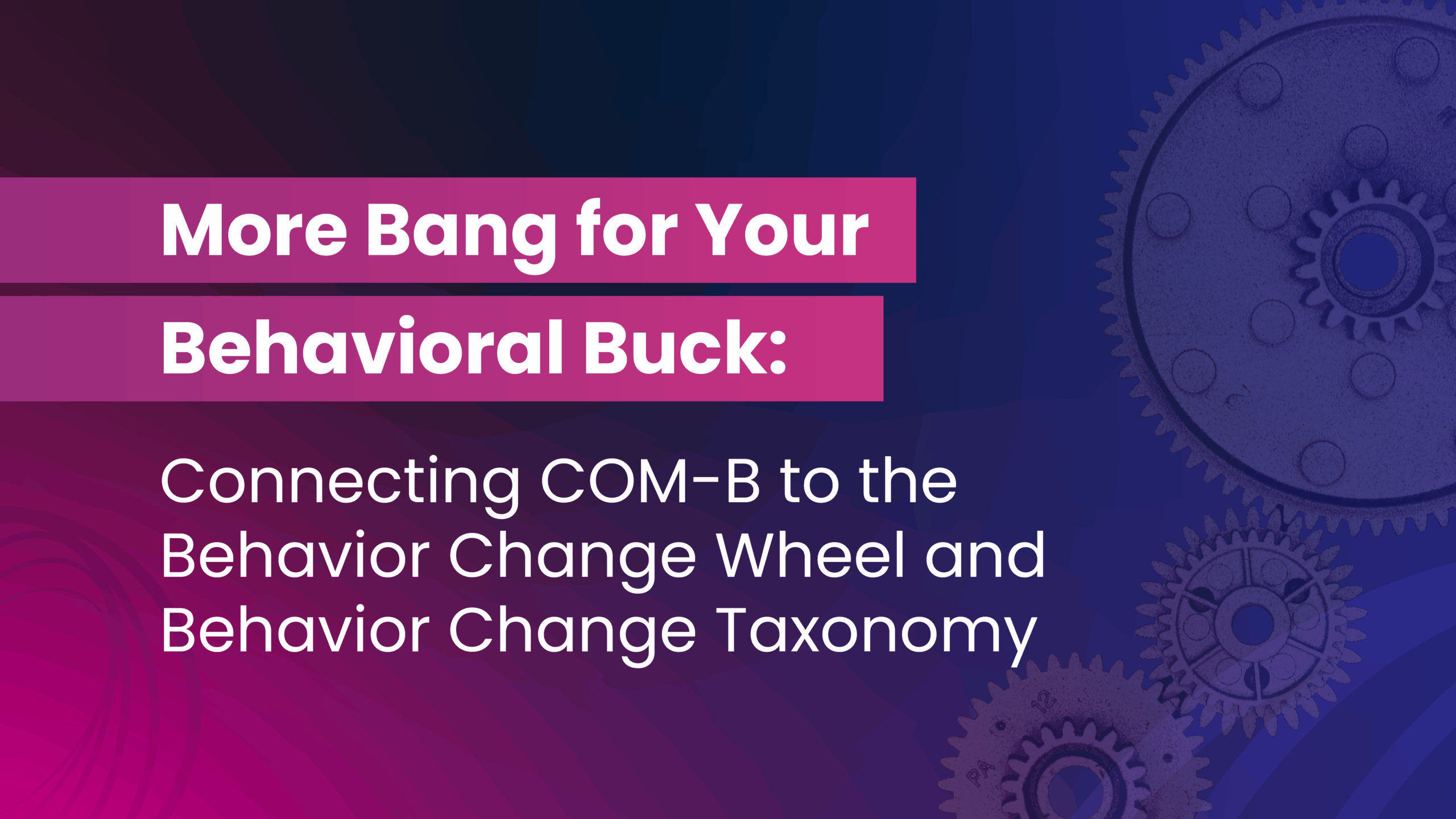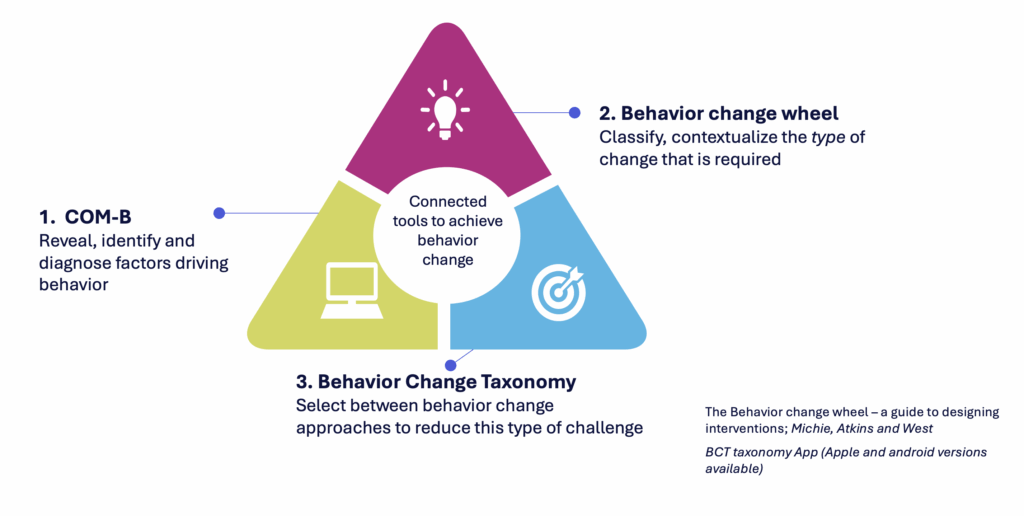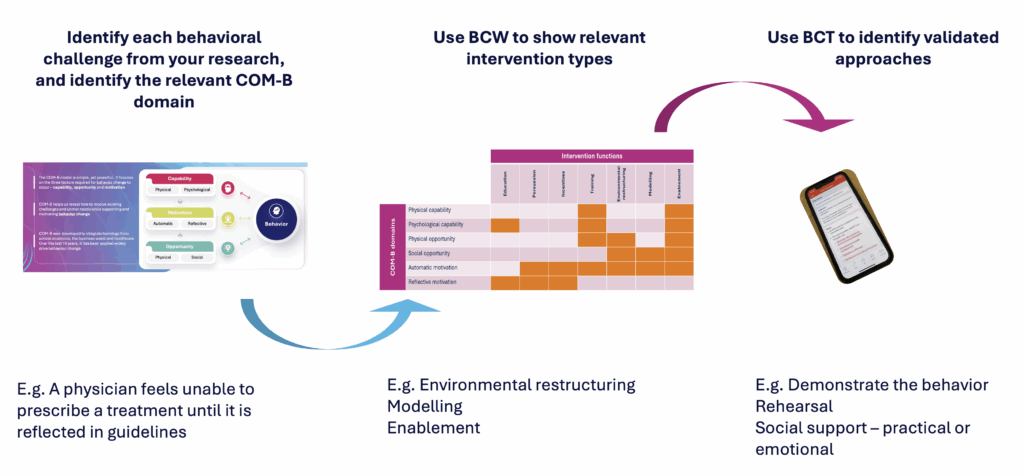
COM-B has rightly become a cornerstone of behavior change in market research projects. It allows a seamless transition from insight to practical implementation by pinpointing where to focus behavior change efforts. While COM-B is widely used, integrating it with the Behavior Change Wheel (BCW) and Behavior Change Taxonomy (BCT) is less common but can offer a more comprehensive approach. These three tools were developed to be used together to provide a comprehensive toolkit, showing how to drive effective and sustainable behavior change.
Here, we will explore how these interconnected tools can help our clients to bring about the intended behavior change.
The outrageous value of COM-B
The COM-B model identifies three essential factors for behavior change: Capability, Opportunity, and Motivation. Developed by Professor Michie and colleagues through a literature review, integration of existing behavior change models, and unifying terminology, COM-B consolidates learnings from across academia, business, and healthcare. It is a versatile, robust framework with many applications.

Leveraging the value of COM-B
The BCW, developed by the same group, guides would-be change makers to identify interventions that have been shown to be effective for their specific challenges. It offers tailored solutions for each COM-B domain, ensuring strategies are directly aligned with the intended behavior change, enhancing relevance and impact.

For teams that want to go even further, the BCT lists specific interventions that have been proven to be effective in each of 16 behavior change domains and 93 subdomains, providing a springboard for designing evidence-based, practical and actionable behavioral interventions.

Conclusion
By linking COM-B to BCW and BCT we achieve a robust framework to implement behavior change strategies effectively. This interconnected approach ensures interventions that are tailored to the specific target behaviors, ultimately leading to more successful outcomes.
